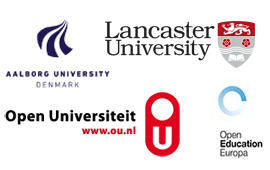

Unraveling networked learning initiatives:
an analytic framework
Ellen Rusman, Fleur Prinsen, Marjan Vermeulen, Aelten Institute, Open Universiteit
Networked learning happens naturally within the social systems of which we are all part. However, in certain circumstances individuals may want to actively take initiative to initiate interaction with others they are not yet regularly in exchange with. This may be the case when external influences and societal changes require innovation of existing practices.
This paper proposes a framework with relevant dimensions providing insight into precipitated characteristics of designed as well as ‘fostered or grown' networked learning initiatives. Networked learning initiatives are characterized as "goal-directed, interest-, or needs based activities of a group of (at least three) individuals that initiate interaction across the boundaries of their regular social systems".
The proposed framework is based on two existing research traditions, namely 'networked learning' and 'learning networks', comparing, integrating and building upon knowledge from both perspectives. We uncover some interesting differences between definitions, but also similarities in the way they describe what ‘networked' means and how learning is conceptualized. We think it is productive to combine both research perspectives, since they both study the process of learning in networks extensively, albeit from different points of view, and their combination can provide valuable insights in networked learning initiatives. We uncover important features of networked learning initiatives, characterize actors and connections of which they are comprised and conditions which facilitate and support them. The resulting framework could be used both for analytic purposes and (partly) as a design framework.
In this framework it is acknowledged that not all successful networks have the same characteristics: there is no standard ‘constellation' of people, roles, rules, tools and artefacts, although there are indications that some network structures work better than others. Interactions of individuals can only be designed and fostered till a certain degree: the type of network and its ‘growth' (e.g. in terms of the quantity of people involved, or the quality and relevance of co-created concepts, ideas, artefacts and solutions to its ‘inhabitants') is in the hand of the people involved. Therefore, the framework consists of dimensions on a sliding scale. It introduces a structured and analytic way to look at the precipitation of networked learning initiatives: learning networks. Successive research on the application of this framework and feedback from the networked learning community is needed to further validate it's usability and value to both research as well as practice.
Keywords
Social learning, collaborative learning, learning network, networked learning, co-creation, collaboration, innovation
Joint Organising Institutions
| Conference Travel and Accommodation |Doctoral Consortium | Past Conference Proceedings | Contact |